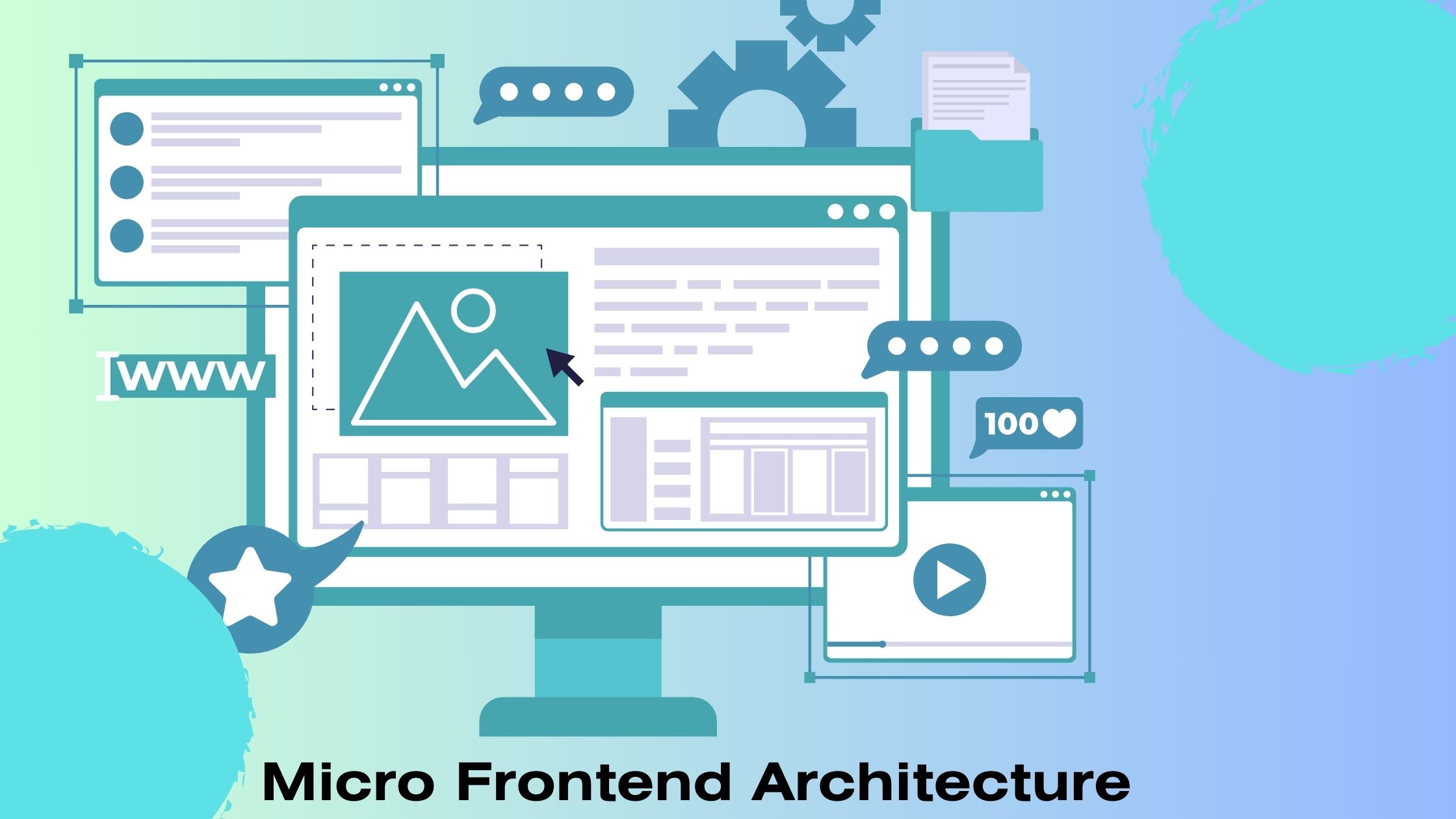What is Micro Frontend Architecture?

In the ever-evolving landscape of web development, architects and developers are continually seeking innovative ways to build scalable and maintainable applications. One of the latest architectural paradigms that has gained significant traction is “Micro Frontend Architecture.”
This approach mirrors the principles of microservices but is focused on the frontend of web applications.
In this blog post, we’ll explore what micro frontend architecture is, its benefits, implementation, and when it makes sense to use it.
Understanding Micro Frontend Architecture
Traditional monolithic frontend architectures involve building an entire web application as a single, tightly integrated unit. While this approach may be suitable for smaller projects, it becomes unwieldy and difficult to manage as applications grow in complexity. Micro Frontend Architecture is an alternative approach that seeks to break down the frontend into smaller, more manageable pieces.
At its core, Micro Frontend Architecture is about treating the frontend as a composition of loosely coupled, independent modules or micro frontends. Each micro frontend is responsible for a specific piece of the user interface and can be developed, tested, and deployed independently of the others. These micro frontends can be built using different technologies, frameworks, and languages, and they can be hosted, versioned, and scaled separately.
Benefits of Micro Frontend Architecture
Scalability: Micro Frontend Architecture allows teams to scale the development of individual features or sections of the application independently. This means different teams can work on different parts of the application simultaneously.
Modularity: Micro frontends promote modularity, making it easier to reuse components and maintain consistency in design and functionality across the application.
Independent Deployments: Each micro frontend can be deployed independently. This reduces the risk associated with deploying changes to the entire application and allows for more frequent releases of specific features.
Technological Freedom: Teams can choose the best technologies and frameworks for their specific micro frontend, promoting innovation and flexibility.
Improved Collaboration: Teams can work more independently, which can lead to more focused, efficient collaboration.
Isolation of Issues: If a problem occurs in one micro frontend, it is less likely to affect the entire application, making debugging and issue resolution more straightforward.
Implementing Micro Frontend Architecture
Implementing Micro Frontend Architecture involves breaking down your frontend into smaller, manageable parts. Here’s a high-level process for implementing it:
Decomposition: Identify the logical sections or features of your application that can be separated into micro frontends.
Independent Development: Assign teams or individuals to work on each micro frontend independently. They can choose the technology stack that best suits their needs.
Communication: Establish clear communication and integration points between micro frontends, enabling them to work together seamlessly. This might involve using APIs or a shared data layer.
Build and Deployment: Develop, test, and deploy each micro frontend independently. Use version control and containerization for better management.
Integration: Create a shell or container application that brings these micro frontends together. This container application is responsible for orchestrating the loading and communication between micro frontends.
User Experience: Ensure a smooth and consistent user experience by handling navigation and transitions between micro frontends gracefully.
When to Use Micro Frontend Architecture
Micro Frontend Architecture is not a one-size-fits-all solution. It’s most beneficial in scenarios where you have a large, complex web application with multiple teams working on different parts. Here are some situations when you might consider adopting this approach:
Large Teams: When multiple large teams are working on different sections of a web application.
Technological Diversity: When different parts of the application require different technologies or frameworks.
Continuous Deployment: When you need to deploy and release features independently and frequently.
Migrating Legacy Code: When migrating from a monolithic architecture to a more flexible, modular approach.
Conclusion
The Micro Frontend Architecture presents a potent strategy for constructing web applications that are both scalable and easily maintainable, and it’s steadily gaining momentum in the ever-evolving realm of web development. By fragmenting the frontend into self-contained modules, development teams can enhance their efficiency, carry out changes with heightened confidence, and harness a wide array of technologies.
To effectively implement the Micro Frontend Architecture, it is imperative to assemble a team of adept and seasoned developers who possess a deep understanding of this methodology. Considering to hire frontend developers with specialization in micro frontend architecture is a strategic move that underpins the triumph of your project. With the right team at your disposal, you can fully embrace the advantages of this innovative architecture and fabricate web applications that exhibit both resilience and adaptability.
